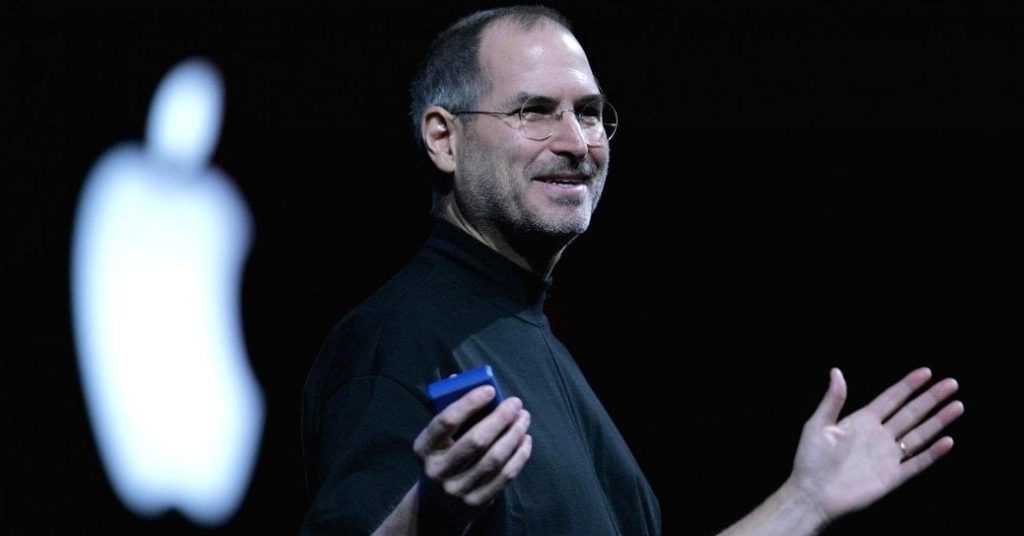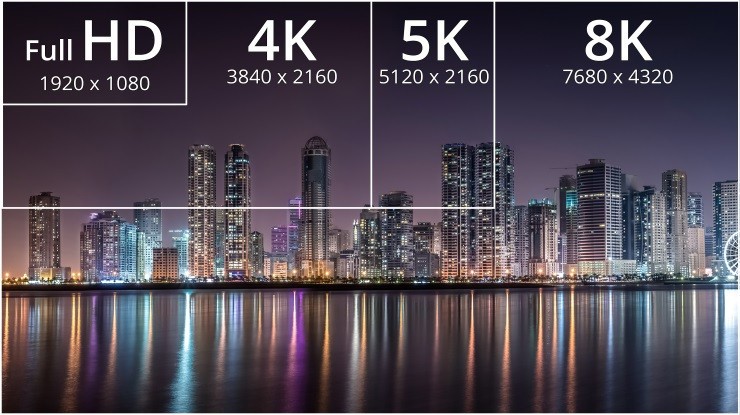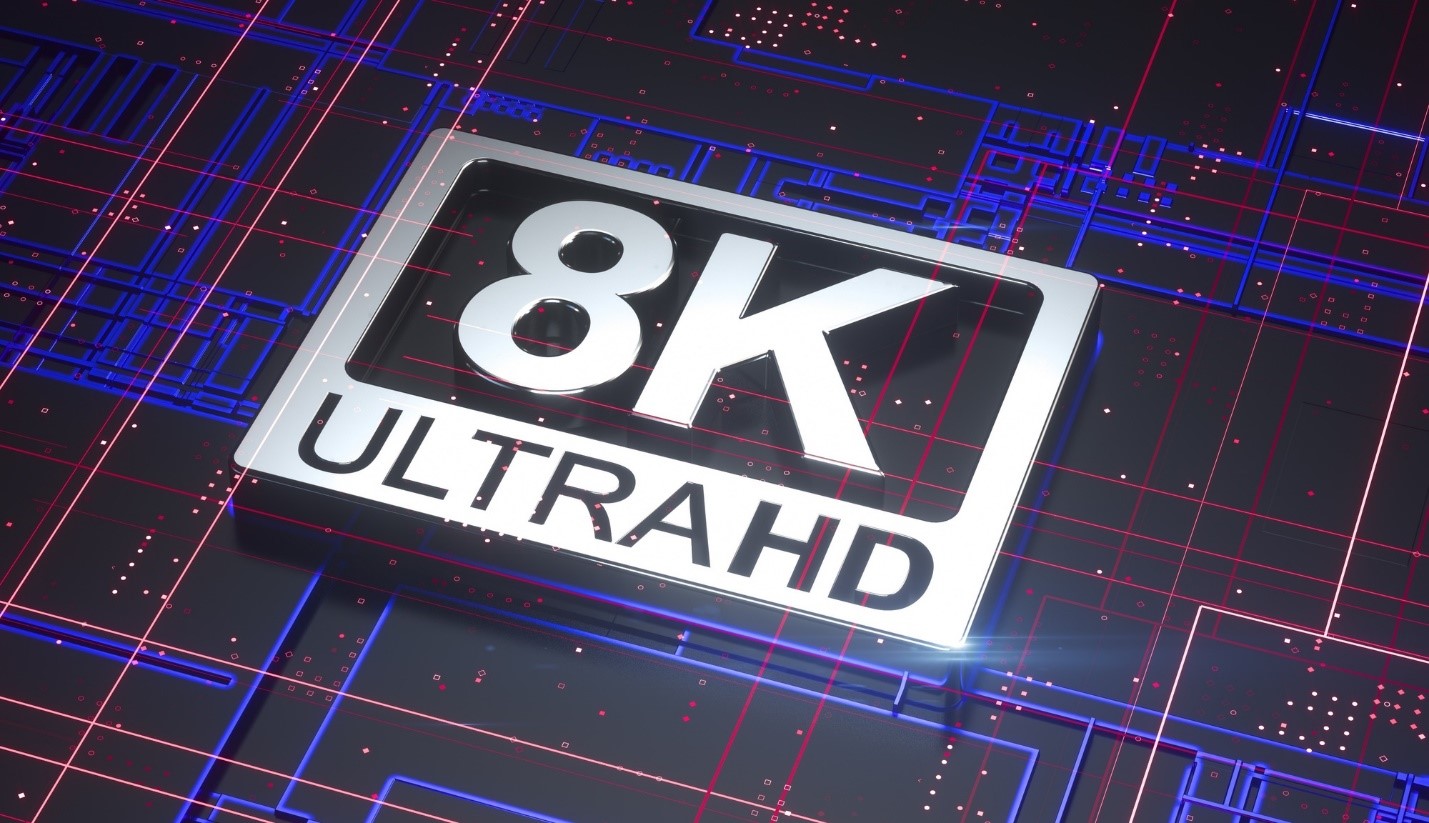The market is slowly filling TVs with a resolution of 8K. So far they are a very expensive pleasure, but with each month the models become more, and the prices are lower. Among smartphones and tablets, 4K is no longer a novelty (Sony Z5 Premium was released in 2015), but there is no 8K yet.
Why is that? Can the human eye detect the difference between 4K and 8K? Let’s try to figure out, maybe 8K screens are not needed by people at all?
Table of Contents
What is the resolution of the human eye ?
Absolute screen resolution is measured in pixels or megapixels, for example, 3840×2160 pixels or 8 megapixels. Relative (density) – in dots per inch, for example, 400 PPI. But the screen is a discrete system, and the human eye is analog, therefore it is impossible to measure vision in pixels.
Vision resolution is measured in angular degrees and minutes. Normally, it is 1-2 ‘(angular minutes or 1/60 degrees). A person who possesses healthy (100%) eyesight should see the letters in the 10th row of the Sivtsev table (the famous “ShBMNK …”) from 5 meters. To see them, you need to have an eye resolution of the order of 1 ‘.
If we imagine the world as a sphere bounded by the horizon (that’s how we see it), then this resolution means that two objects on the horizon, the distance between which is less than 1-2 angular minutes, will merge into one, and more will be seen as separate.
Angular minutes – the value is not absolute, but relative. If a person is in a clean field – the horizon is located far away, and in one angular minute a large piece of space is placed. Because of this, even two trees away can merge into one point.
If you place the human eye in the center of the ball, with a circumference of 20 meters, then in one angular minute (1/21600 share of a circle) the whole segment is less than 1 mm. Therefore, if two parallel lines are applied to the surface of such a sphere, the distance between which is less than the angular minute (1 mm in this case), the eye will perceive them as one line.
Thus, the closer to the eye are the neighboring objects – the better a person sees the gap between them, and vice versa, the farther they are, the larger this gap should be so that the objects do not merge into one. That is, the higher the PPI screen (density of points) – the less distance is needed in order to see the difference. From
Do I need 8K in smartphones?

Once presenting the iPhone 4 with a Retina screen, Steve Jobs stated:
300 PPI is the limit above which the human retina can no longer distinguish individual pixels when viewed from 10-12 inches (31-36 cm).
Let’s check how true these words are.
Human vision is a spherical structure, and screens are flat or almost flat. However, to simplify the calculations, we can neglect this factor and assume that the display repeats the surface of a sphere that a person is looking at from inside.
Using a smartphone, a person looks at it from a distance of about 40 cm. Remembering the “two-pi-er” from a school textbook on geometry, we get 40 * 2 * π = 251. That is, at this distance, the screen corresponds to the surface of a sphere with a circumference of 251 cm, if the eyes are in its center.
The circumference contains 21,600 angular minutes, which means that in one minute a 251-centimeter circle will fit about 0,0116 cm, 0,116 mm, or about 116 microns. Closely spaced objects, smaller than this value, will merge into one.
At a picture density of 300 PPI, pixel dimensions (2.54 (cm) / 300) will be about 0.00847 cm or 84.7 μm. This is less than 116, which means that Apple’s marketers didn’t lie: The iPhone’s Retina screen does have pixels smaller than a healthy average human eye can see from a distance of 40 cm.
Once 300 PPI in a smartphone is more than the resolution of a person’s eyes, there is no point in exceeding this figure. Anyway, the difference between 300, 400 and 600 PPI will be noticeable only to people whose visual acuity is much higher than the average. The 8K-screen with a resolution of 8640×4320 (2: 1) and a diagonal of 6 “will have a pixel density of about 1600 PPI, with their size is 15 microns, which is about 5-10 times more than the average eye needs.
What is the conclusion? In smartphones, 8K resolution is absolutely not necessary for normal use. In order for a person to clearly see the difference between 4K and 8K, he must have a vision with an acuity of the order of 500%. These are the only ones, but very rarely. Therefore, the Sivtsev table allows us to estimate visual acuity only up to 200% (all letters in the lowest row from 5 meters are visible).
The meaning of 8K in a smartphone can only be used in a VR headset. In normal use, such a screen will heavily load iron, but there will be no sense from this.
Also Read: Have you ever compared AMOLED and IPS Displays, we did it
Do I need 8K in cinemas and televisions?
Buying a large TV, a person usually watches it from a distance of up to 10 meters. Again we recall the formula of the circle, we multiply: 2 * 1000 * π = 6283 cm. It is in this area that the TV fits, which is watched from 10 meters. We divide 6283 cm by 21600 minutes: 6283/21600 = 0.29 cm in the angular minute. 0.29 cm is 2.9 mm. It is at these sizes that the neighboring pixels begin to merge together for the eye.

4K TV resolution is 3240×2160 pixels. If you multiply 3240 by 2.9 mm – we get 9396 mm, 2160 by 2.9 – 6264 mm. That is, in order for a person to distinguish pixels at 8K from 10 meters, the TV must have a size greater than 9.4 by 6.3 meters, a diagonal greater than 11.3 meters or 440 inches. This is no longer a TV, but a real cinema.
Modern IMAX cinemas use screens with an average size of about 22×12 meters. This is more than the figures obtained, therefore, from a distance of 10 meters and closer a person will distinguish pixels by 4K. Therefore, in cinemas, the meaning of the introduction of 8K is definitely there. After all, with this resolution, the linear dimensions of the pixel will be halved, therefore, they will be distinguishable from a distance of not 10 meters, but 5.
And now let’s “get closer” to the screen five times, at a distance of two meters. Accordingly, the linear dimensions of the distinguishable pixel will also be reduced by a factor of five, from 2.9 to 0.58 mm. The dimensions of the 4K screen in this case will be 1879×1252 mm or 1.9×1.3 meters, the diagonal is 2.25 meters or 88 inches. It is with this (or greater) diagonal a person with normal vision begins to feel the difference between 4K and 8K, looking at the screen from 2 meters.
If you go further downwards, and take a TV with a diagonal of 43 “(about half the size of 88”), then the minimum distinguishable linear dimensions of pixels are also reduced by half. This means that from two meters a person will see the difference between 2K (FullHD) and 4K, and in order to distinguish 4K and 8K, you will need to get closer to a meter.
Now admit: how often do you watch TV from a meter distance? It seems I can answer for you: almost never. That is, using a 43-inch TV, in practice you will not encounter a situation in which 4K resolution will not be enough for the eyes. Therefore, relatively small TVs, with a diagonal of about 50 “,” plus or minus tram stop “, do not need 8K.
Of course, increasing the resolution is also profitable in terms of marketing, and allows you to reach a wider audience. After all, people with “eagle eyes” will be happy to increase the clarity of the picture, even if others do not feel it anymore. But calculations show that the introduction of screens with a resolution of 8K has a pronounced meaning only in cinemas and large TV. On “ordinary” TVs, this is not so necessary, but on smartphones it does not make sense at all, because 8K at 5-6 inches is much higher than the resolution of the eye.
Given that even with 4K, the lack of screen resolution in most cases is not worth it, it will be much more useful to work on other aspects of picture quality. Instead of increasing the “corn” pixels, engineers should work to improve the uniformity of the backlight (hi, black and gray corners on the IPS), increase the brightness and contrast, expand the dynamic range of the picture. Fortunately, this is exactly what they are doing now, developing new OLED displays, introducing HDR, HDR +, etc. technologies.
Author Bio: Jayapal reddy, a Tech journalist and chief editor at Vinstechs, contributed many works at various blogs. Being a freelancer, he was highly interested in online marketing and web designing.

Alex is fascinated with “understanding” people. It’s actually what drives everything he does. He believes in a thoughtful exploration of how you shape your thoughts, experience of the world.


